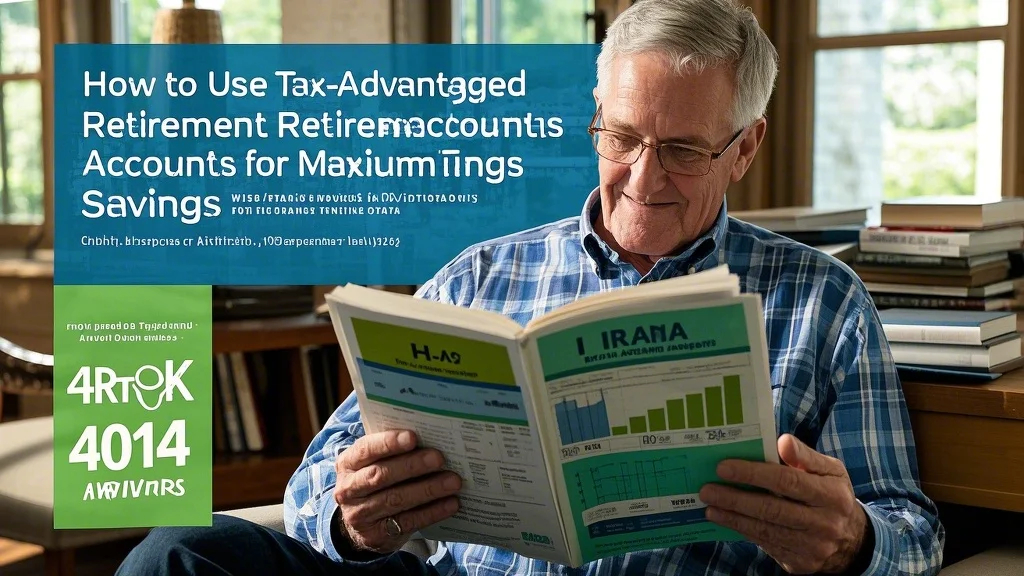Understanding the Retirement Account Landscape
Navigating the world of tax-advantaged retirement accounts requires understanding the different options available and how they fit into your overall financial picture. Traditional IRAs and 401(k)s offer upfront tax deductions, allowing your contributions to grow tax-deferred until retirement. Roth accounts work in reverse – you contribute after-tax dollars but enjoy tax-free withdrawals later. Health Savings Accounts (HSAs) provide triple tax advantages when used for medical expenses, making them powerful supplements to traditional retirement accounts. These various vehicles form the foundation of comprehensive tax-efficient retirement planning, each serving different purposes depending on your current tax bracket and expected future income.
The annual contribution limits for these accounts create natural priorities in retirement tax planning. For 2024, 401(k) plans allow up to $23,000 in contributions ($30,500 if you’re 50 or older), while IRA limits stand at $7,000 ($8,000 for those 50+). HSAs offer additional opportunities with $4,300 for individual coverage and $8,600 for family coverage. When comparing IRA vs 401k for retirement, remember that 401(k)s often come with employer matching – essentially free money that should always be maximized before contributing to IRAs. The key is developing a contribution strategy that optimizes all available accounts based on your specific financial situation.
Maximizing Employer-Sponsored Retirement Plans
For most Americans, workplace retirement plans represent the cornerstone of tax-saving retirement strategies. The power of 401(k) or 403(b) accounts lies not just in their high contribution limits but in their payroll deduction feature, which makes consistent saving automatic. Many employers offer matching contributions up to a certain percentage of your salary – failing to contribute enough to earn the full match is like leaving part of your compensation on the table. When evaluating IRA vs 401k for retirement, the employer match typically makes the 401(k) the clear first priority for most workers.
Sophisticated retirement tax planning involves more than just contributing to your 401(k) – it requires smart fund selection within the plan. Many employer-sponsored plans now offer Roth 401(k) options, allowing high earners to bypass income limits that apply to Roth IRAs. After-tax 401(k) contributions (different from Roth) can be converted to Roth through in-plan conversions or rollovers, creating a “mega backdoor Roth” strategy for those who have maxed out other options. These advanced techniques demonstrate how workplace retirement plans can be leveraged for both traditional and Roth benefits as part of comprehensive tax-efficient retirement planning.

Optimizing IRA Contributions and Conversions
Individual Retirement Accounts (IRAs) offer flexibility that makes them valuable complements to workplace plans in any tax-saving retirement strategies. Traditional IRAs provide immediate tax deductions for those who qualify, while Roth IRAs offer tax-free growth and withdrawals. The backdoor Roth IRA strategy – making nondeductible contributions to a traditional IRA and immediately converting to Roth – allows high earners to bypass income limits. When considering IRA vs 401k for retirement, remember that IRAs typically offer broader investment choices than employer-sponsored plans, giving you more control over your asset allocation.
Roth conversions represent one of the most powerful tools in retirement tax planning, especially during low-income years. By converting traditional IRA funds to Roth when you’re in a lower tax bracket, you can minimize the conversion tax while positioning funds for tax-free growth. This strategy works particularly well for early retirees who have left their jobs but haven’t started Social Security or required minimum distributions (RMDs). The key to successful conversions as part of tax-efficient retirement planning is spreading them over multiple years to avoid pushing yourself into higher tax brackets unnecessarily.
Health Savings Accounts: The Ultimate Retirement Vehicle
Often overlooked in discussions of tax-advantaged retirement accounts, Health Savings Accounts (HSAs) offer unique triple tax benefits when paired with high-deductible health plans. Contributions are tax-deductible, growth is tax-free, and withdrawals for qualified medical expenses are untaxed. What makes HSAs particularly valuable for tax-saving retirement strategies is that after age 65, funds can be withdrawn for any purpose (subject to ordinary income tax) just like a traditional IRA – but with no required minimum distributions. This flexibility makes them ideal for covering healthcare costs in retirement while preserving other retirement assets.
To maximize HSAs as part of your tax-efficient retirement planning, treat them as long-term investment accounts rather than spending accounts for current medical expenses. Paying medical bills out-of-pocket while letting your HSA grow creates what’s essentially a super-charged retirement account. The 2024 contribution limits of $4,300 for individuals and $8,600 for families (plus $1,000 catch-up for those 55+) allow substantial tax-advantaged growth potential. When coordinated with other retirement tax planning strategies, HSAs can significantly reduce your lifetime tax burden while ensuring you’re prepared for healthcare costs that often rise in retirement.
Strategic Withdrawal Planning in Retirement
The true power of tax-advantaged retirement accounts becomes apparent when you transition from accumulation to distribution phase. Smart withdrawal strategies can potentially save tens of thousands in taxes over a retirement lifetime. The general rule is to withdraw from taxable accounts first, then tax-deferred accounts, and finally tax-free Roth accounts – though the optimal sequence varies based on individual circumstances. This approach forms a critical component of comprehensive tax-saving retirement strategies designed to minimize your tax bracket throughout retirement.
Required Minimum Distributions (RMDs) present both a challenge and opportunity in retirement tax planning. Beginning at age 73 (rising to 75 in 2033), these mandatory withdrawals from traditional retirement accounts can push retirees into higher tax brackets. Strategic Roth conversions before RMD age can help manage this tax liability. Qualified Charitable Distributions (QCDs) allow those over 70½ to donate up to $100,000 annually from IRAs directly to charity, satisfying RMDs without increasing taxable income. These advanced techniques demonstrate how tax-efficient retirement planning continues well into your golden years, constantly adapting to changing tax laws and personal circumstances.
Coordinating Multiple Account Types for Optimal Results
The most effective tax-saving retirement strategies involve coordinating all available account types to create tax diversification. This means having a mix of taxable, tax-deferred, and tax-free accounts that give you flexibility to manage your taxable income in retirement. For example, you might withdraw enough from traditional accounts to fill up a low tax bracket, then take additional funds from Roth accounts to avoid jumping into a higher bracket. This nuanced approach to retirement tax planning requires careful record-keeping and projection of future tax liabilities.
When evaluating IRA vs 401k for retirement in this context, consider how each fits into your broader distribution strategy. Some employer plans offer better withdrawal options or creditor protections than IRAs. The key to successful tax-efficient retirement planning is maintaining flexibility – the tax landscape will likely change during your retirement, and your withdrawal strategy should adapt accordingly. Regular reviews with a tax professional can help identify new opportunities as laws change and ensure you’re not overlooking any valuable strategies to preserve more of your hard-earned retirement savings.
